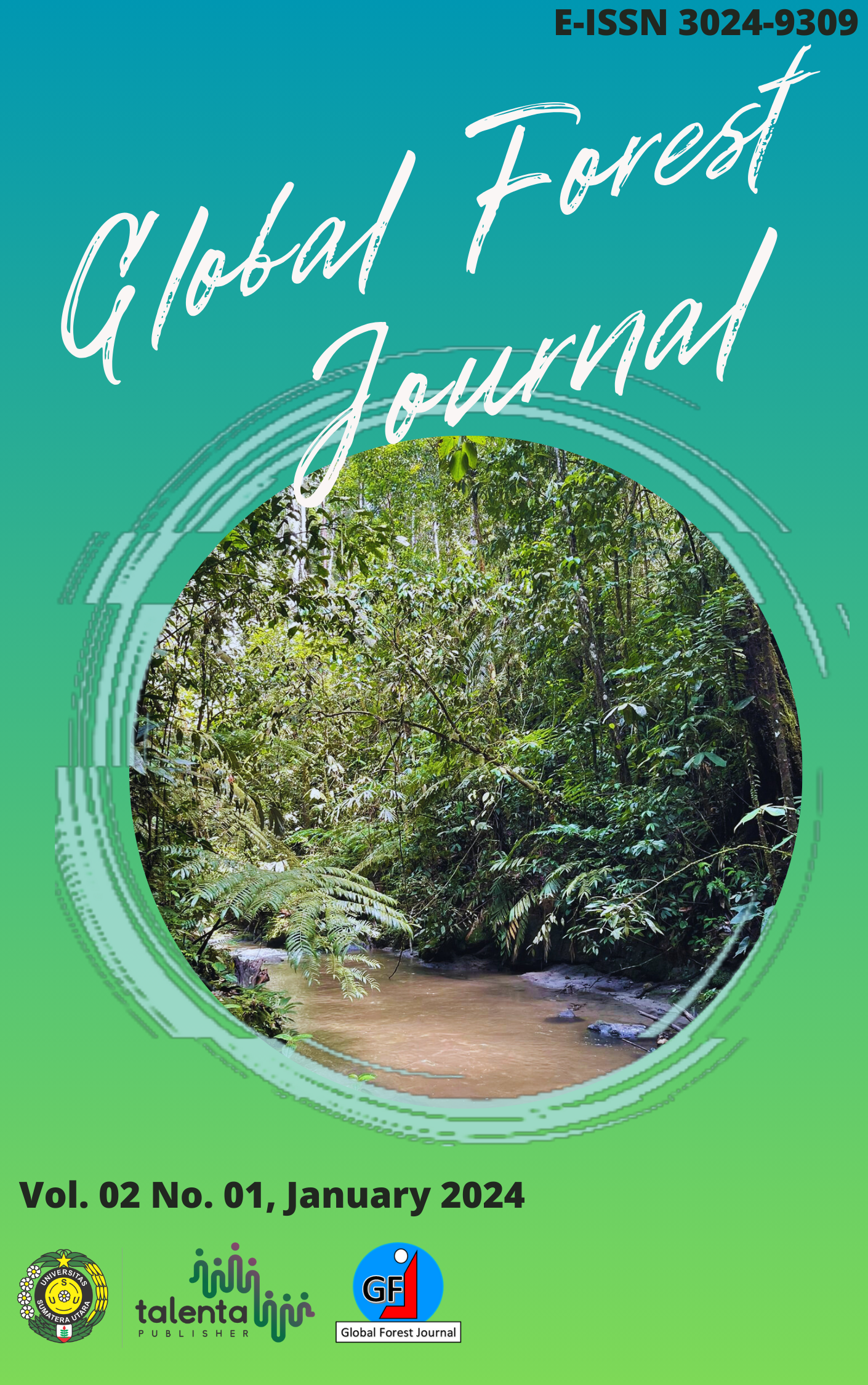Processing rubber latex (Hevea brasiliensis) in agroforestry in Menggala Mas Village, Tulang Bawang Tengah District, Tulang Bawang Barat Regency
DOI:
https://doi.org/10.32734/gfj.v2i01.14998Keywords:
Agroforestry, Latex, Local Knowledge, RubberAbstract
Local knowledge of rubber latex processing is important for village communities that depend on rubber plants for their livelihood. This research aims to determine the processing of rubber latex in agroforestry carried out by the community in Menggala Mas Village, Lampung Province, Indonesia. This research approach is qualitative. Data was obtained by observation, in-depth interviews, and documentation studies. Then, the data was processed by making data transcripts, coding, categorizing, drawing temporary conclusions, triangulating, and drawing conclusions so that the results obtained could be analyzed to determine the data processing. Local communities carry out rubber in agroforestry. The research results showed that three applications of agroforestry planting patterns were found, namely alley cropping (alley pattern), Trees along border (fence pattern), and random mixture (random pattern). The dominant combination in alley cropping is rubber-pulai, and rubber-mentru-afrika wood. The dominant combinations in Trees along the border are rubber-acacia, rubber-jackfruit-cempedak, rubber-petai-teak. The dominant combinations in the random mixture are rubber-jengkol, rubber-petai-jengkol-acacia, rubber-jackfruit-cempedak, rubber-pulai-noni-jengkol, rubber-banana-gadung-sungkai. The rubber latex processing process in agroforestry is carried out traditionally, starting from the tapping process, sap acidification, sap harvesting (napeu), sap separation, and sales and harvesting of agroforestry crops. The community's local knowledge has been passed down from their parents to reduce the costs of processing rubber latex from expensive materials so that the community can gain more profits. This has been proven if local communities can manage their land well, which can become a long-term source of livelihood. The government needs to assist with strategies for processing rubber latex as well as managing rubber agroforestry land to increase farmers' knowledge and harvest yields
Downloads
Downloads
Published
Issue
Section
License
Copyright (c) 2024 Global Forest Journal

This work is licensed under a Creative Commons Attribution-ShareAlike 4.0 International License.












